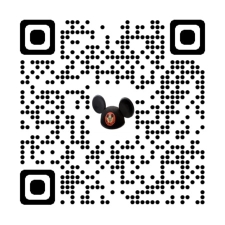Peculiar Bay Area Home That Inspired An Iconic Ride
ID:
TMS-5666
Source:
SFGate
Author:
Julie Tremaine,
Dateline:
Posted:
Status:
Current
“We find it delightfully unlivable here,” the Ghost Host says as you ride in your Doom Buggy through Disneyland’s Haunted Mansion. “Each room has wall-to-wall creeps, and hot and cold running chills.”
Many people claim that San Jose’s Winchester Mystery House provides the same kind of creeps and chills, especially at this time of year, when it holds its annual haunted house. Most of the legends behind why Sarah Winchester built and continued to build throughout the remainder of her life the enormous and strange 160-room home have been debunked. She didn’t build 24 hours a day to hide from the spirits of the people killed by her family’s Winchester rifles, and didn’t design the home like the labyrinth it is to confuse those same spirits, who were intent on claiming her life as penance for building a fortune on firearms.
But still, people claim to experience supernatural things in the mansion. Even if the home isn’t haunted, there’s an undeniable aura in the place. There are staircases that lead to nowhere, windows built into the floor, a strange recurrence of the number 13, a “witch’s cap” turret with preternaturally perfect acoustics, doors that open onto nothing but a three-story drop to the ground below. It might have been named the “mystery house” in 1923 when it opened as an attraction, but even if they didn’t tell you before you went inside, you’d more than likely pick up on that air of mystery once you did go in.
It’s that air of mystery and its ghostly reputation that drew the attention of Walt Disney Imagineering (the creative designers of Disney attractions, once called WED Enterprises) when the company was first envisioning its haunted house attraction for the yet-to-be-built Disneyland. In fact, one Imagineer, Ken Anderson, even went to the house on a research trip when the attraction that would eventually be called the Haunted Mansion was in its earliest ideations.
“We believe there’s a lot of parallels and a lot of things that carried through to the final design in terms of inspiration,” Walter Magnuson, general manager of Winchester Mystery House, told SFGATE. Before his current job at a “real” haunted mansion, he worked at Disneyland, for Walt Disney Studios and at Walt Disney World at various times in his career.
The idea of a haunted-house attraction at Disneyland predates the park itself. “There were some early conceptual drawings showing it at the end of Main Street,” Magnuson said, “kind of that ‘last house on the left’ type thing.” From its earliest iterations, Haunted Mansion was famously debated. Some of the Imagineers believed it should be fun and funny, in the lighthearted spirit of Disney. Others believed a haunted house should be properly scary. “The origin story, as many people know, was not a straight line,” he added. “It definitely took a number of years to really materialize.”
The ride eventually opened in 1969, years after Walt Disney died. But it was in development off and on for more than a decade before that. “It disappeared for a while when Disneyland opened, and then it sounds like Walt got serious and kicked it to the front burner again in 1957,” he said. But at that time, the omnimover system that powers the “Doom Buggy” ride cars didn’t exist yet. (Former Imagineer and Disney Legend Bob Gurr didn’t invent that until the development of 1967 ride Adventure Thru Inner Space.) In 1957, the thinking was that the park’s haunted house would be a walk-through attraction.
There were a lot of unknowns, though. How would people pace through an attraction when they were afraid of what was around the next corner? What would crowd control look like? Just exactly how much time did people want to spend with ghosts?
To find the answers, Imagineer Ken Anderson went to San Jose. “He visited here in the spring of 1957,” Magnuson said. “He took a lot of notes on the behavior of the guests on the tour, the way the tour guide interacted with them, the amount of people that could fit on the tour and thus how many they could theoretically get through in a day or a month or a year if they built it at Disneyland.”
Anderson, who started at Disney as an animator and worked on films like “Snow White and the Seven Dwarfs” and “Pinocchio,” also took significant visual inspiration from the Winchester house. One of Anderson’s early sketches includes a ballroom with an organ, which bears a striking resemblance to the ballroom at Winchester Mystery House, with its organ prominently on display in the room. Another sketch involves a body hanging from the ceiling in a room reminiscent of the house’s Witches Cap. “This was definitely a big part of his exploratory research,” Magnuson said.
Magnuson sees a resemblance between the two uncanny attractions. “The ballroom obviously, with the types of wood and the paneling and the organ and the flooring, really takes me right to Disneyland’s Haunted Mansion,” Magnuson said. “A lot of the style of the house, some of the wallpapers and some of the fixtures are very similar.”
Walt Disney famously disliked early visualizations of the Haunted Mansion, because they were run-down, spooky old homes. “Walt Disney was really adamant that he didn’t want the dilapidated, derelict haunted house facade visible from outside,” Magnuson said. “He wanted it to be a pristine, beautiful mansion. And once you got inside, things sort of went haywire. So I think the Winchester House was appealing in that way as well. Even on its worst day, from the outside, the Winchester House is just a gorgeous stately mansion.”
Andersen made many original concept sketches and wrote 14 versions of a script for what would become the Haunted Mansion. He envisioned many versions. In one, a ghoulish butler, once a sea captain who murdered his bride, led groups through the mansion. Elements of that are present today the exterior of the Haunted Mansion is a sea captain’s home in New Orleans, and the narrator of the experience is a “Ghost Host.” Another involved a recorded narration from Walt Disney himself.
Anderson’s influence and work were seminal to the Haunted Mansion, but he isn’t often remembered in the pantheon of Imagineers who created the final project, like Yale Gracey and Rolly Crump, who did most of the special effects, and X Atencio, who wrote the iconic “Grim Grinning Ghosts” song.
“While all the men cited are well deserving of the attention they receive for their contributions to the iconic attraction, Ken Anderson is the ‘forgotten’ man who laid the foundation for this memorable experience,” Disney historian Jim Korkis wrote in 2014. “His early work on the project strongly influenced some of the things we all love best about this happy haunting ground.”
Fifty-five years after Haunted Mansion opened, and more than a century after Winchester Mystery House started receiving visitors, the similarities persist. “We do believe we were direct inspiration for the Haunted Mansion,” Magnuson said. “And we adore that.”
Attractions Referenced In This Article:





